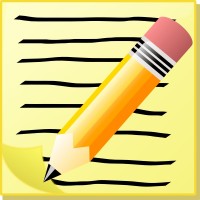Documentary Logging Tips
I’m offering the following 4-part series on the Stages of Post-Production: Logging, Assembly Cut, Rough Cut, Fine Cut/Locked Picture. Today’s Part 1 focuses on preparing for the edit with transcripts and effective logging tips.
If you’re underfunded, should you pay to get transcripts made of your chief interviews? Yes! I used to skip this step to save money, but after working with hundreds of filmmakers, I’ve come to see how transcripts help editors cut much more quickly. Post on Doculink to find a professional transcriber.
I also now recommend starting the logging process as soon as you’ve shot footage. Why? First, you’ll see your camera mistakes and this will improve your next shoot.
Second, you’ll log more effectively while your memory is fresh.
Third, logging hundreds of hours of footage at the end of production can be a huge momentum-killer!
An important detail: once you’ve named and ingested your footage, don’t change the name of a clip unless you go to the trouble of changing the name of the associated media file. Relinking tens of thousands of clips with mis-matched names is a headache you want to avoid.
As you log, feel free to use markers or write descriptions in a “comments” column. But most importantly, place your best clips (“selects”) in a timeline. I like to create a timeline/sequence for every scene.
Beyond selecting the obvious plot points for a character-driven documentary, note scenes that move you, even little moments that strike you emotionally. A man looking out a window can convey great depth with the right music.
Distinguish between scenes in which something actually happens, and scenes that will primarily function as b-roll over VO. Favor the former.
What scenes/footage might work as an inciting incident, backstory, turning points, climax scene?
Also note sound bites that make compelling points intellectually. For essay-style docs, I recommend creating a timeline for every significant conceptual point.
If you’re pressed for time and want to speed up the logging process significantly, you can pay an editor to do this. Or, check out my method for fast-tracking your logging process here.
We currently are working with four filmmakers and have room for two additional film projects. Email me today for a free consultation to talk about how we can help you edit a compelling film quickly and effectively!
Here’s what director Saffron Cassaday had to say about recently working with New Doc Editing:
“Karen was very helpful in offering us tools and insights get us started on editing our feature doc. Her keen knowledge of story structure and organized style of working gave my team and I the confidence to move into our edit with focus and clarity. I look forward to having more sessions with her as we get further into the edit.”
